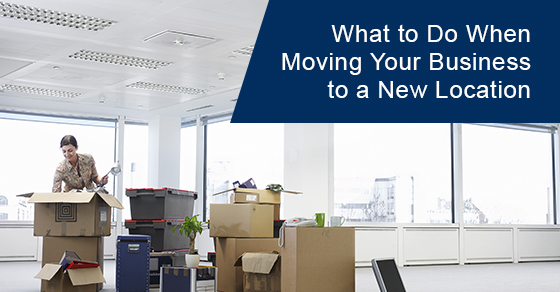What to Do When Moving Your Business to a New Location

Are you planning to move your business to a brand new location? Generally, relocating to a new business location requires planning and a budget.
The biggest challenge is to find a space that will accommodate your business and won’t give you any interior complications, especially when it comes to commercial plumbing.
However, you can ensure a smooth move without too many hiccups with the following eight things to keep in mind when moving your business to a new location.
Decide If You Want to Lease or Buy
Before checking out places for your new business location, you need to decide if you want to lease or buy a space.
If you’re a new business owner running a local business or a start-up with little working capital, or you think it might not be a permanent location, then leasing is the best option.
If you already own an established business and have the working capital to conduct renovations, buying a space can save you money in the long run.
Set a Budget
Once you’ve determined if you’re going to buy or lease new business space, you need to determine a budget on how much you can afford to spend on the purchase price of the space or the base rent.
In the budget, you should reserve a category labelled “extra costs” that includes miscellaneous items such as lease incidentals like insurance, maintenance, and monthly utilities.
Look at Locations
Once you’ve drafted your budget, you can narrow your search for potential locations.
When deciding which locations to check out, look at the area’s parking and public transit, accessibility for clients and suppliers, logistics for shipping and receiving, and storage rooms for your inventory.
Most importantly, when studying different buildings or office spaces, you should check the following plumbing details in each location.
1. Check for active leaks
The last thing you want to do is commit to moving your business to a space where there are water leaks.
Check for water spots on the floors, ceilings, and walls. Pay extra attention to the washrooms. There shouldn’t be any running toilets or signs of mould or mildew.
2. Check the water pressure
Extreme water pressure in a commercial building can cause leaks in angle stops, toilets, water heaters, and practically anywhere water is used.
The water pressure should not be set any higher than 80 PSI.
3. Water heater inspections
Keep in mind when examining different commercial buildings that they could have multiple water heaters like traditional tanks, tankless units, or large boilers.
Since each model of water heater operates differently from one another, a full inspection of every water heating device is needed and shouldn’t be glossed over.
4. Examine the drains
Since commercial spaces have a lot of daily traffic coming from employees, building staff, clients, and members of the public, the location’s drains are more likely to get clogged.
If drains are left clogged over time, the chances of a flood occurring and causing significant damage increase.
Therefore, professional plumbers must examine the commercial plumbing in the space you decide to move into, as they can conduct camera inspections to see what kind of conditions each drain line is in.
5. Schedule a maintenance inspection
Once you’ve decided on the space your business will move to, be sure to bring in commercial plumbing professionals to perform a maintenance inspection.
The following checklist contains the key areas that a maintenance inspection should include:
a) HVAC System
HVAC inspections are important to determine if the commercial building’s air conditioner is in good condition.
The last thing you want is the HVAC system breaking down and having a sweltering hot business space where your employees are disgruntled, and clients feel uncomfortable.
b) Plumbing System
As mentioned earlier, active water leaks are problematic.
During an active leak inspection, your plumber will look for previous leaks, such as corrosion and scale build-up around water fixtures, dried water spots, and oxidation on plumbing pipes.
They will also check for leaking taps, running toilets, and water pressure. If you choose to move your business to an older building, the plumbing inspector will conduct a camera inspection of the main sewer lines and drain lines.
c) The Exterior of the building
Part of the maintenance inspection should include the exterior of the building. Depending on what the outside of the location includes, your plumber will inspect any gardens, pathways, and general landscaping to see how the irrigation system works.
Other important elements the inspector should evaluate when conducting a maintenance inspection on commercial property are the gutters, roof, and downpipes.
These should be leak-free and rust-free. The inspector will examine the exterior walls and foundations for signs of cracks and rotting or rusted areas.
d) Interior of the Building
Once the exterior has been checked, the inspection should move to the interior of the building. Examine the entrances, exits, and corridors for easy access (in case of a flood, fire, or emergency evacuation).
The goal of your plumber when inspecting the interior of your new business’s location is to establish that the property complies with the local requirements of the building’s code.
The maintenance inspection should include checking for any cracks on the interior windows and walls.
All windows should be adequately sealed and not have damp areas, leaks, stains, or mould on the frames. As a part of the final phase of the internal maintenance inspection, the plumber should check any storage rooms for hazardous materials in the building.
Contact Brothers Plumbing
If you would like a free quote on plumbing services for your business, our professional plumbers at Brothers Plumbing are here to help with maintenance inspections. Call us at 800-741-8471 or contact us here.
Posted By Brothers Plumbing
0 Comment
